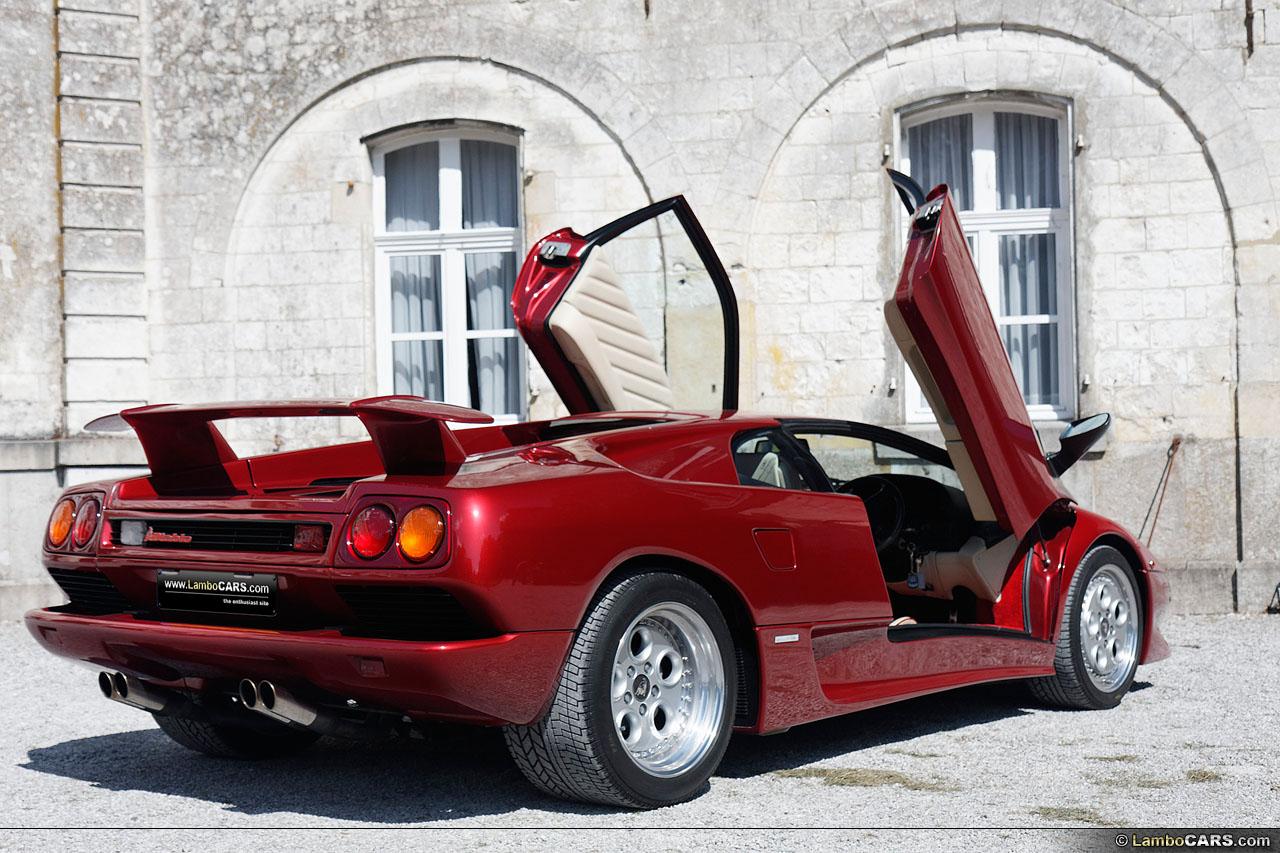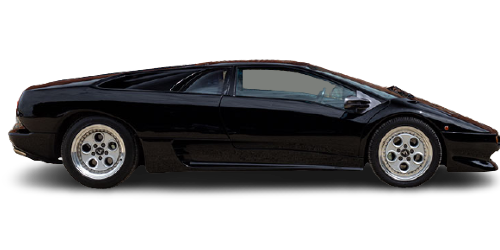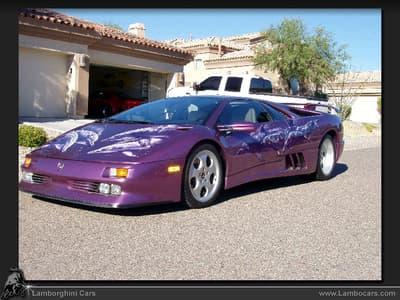In June 1985, Automobili Lamborghini decided it was time to start thinking about a replacement for their legendary Countach; it would take the Lamborghini development team another five years to complete the new super car, the Diablo.
The Diablo was presented to the public on January 21. 1990, at the Hotel de Paris in Monte Carlo during the second Lamborghini Day (the first one was held when the Anniversario was presented in 1988), after five years of development and about 6,000,000,000 Lire went into the project.
The name ‘Diablo’ was in fact taken from a ferocious bull raised by the Duke of Veragua in the 19th century, it fought an epic battle with ‘El Chicorro’ in Madrid on July 11. 1869, this animal became legendary and it’s well-known history and it’s name were aggressive enough to be used for a Lamborghini.
The main directive for the Diablo was simple; its top speed had to be at least 315 Km/h., so work began on the successor of the Countach. For the design of the bodywork Lamborghini contacted Marcello Gandini, he also designed the Miura and Countach, so he was the obvious person to design the new Lamborghini, but his initial design was altered, first under his own directions, later by the Chrysler Styling Center in Detroit.
Chrysler owned Automobili Lamborghini from 1987 on, and arrived right in the middle of the development of project 132.
They changed the design to something more human, more practical, but also less violent, less aggressive. Nevertheless, the overall lines still looked close enough to have Marcello Gandini put his autograph on the side of the car.
The Diablo was still a true Lamborghini, low, wide and extremely fast, its top speed was set at 325 Km/h., but on the Nardo test track, Sandro Munari managed to reach 340 Km/h. To reach these speeds, the Diablo received a modified V-12 engine, still with four valves per cylinder, but now with a displacement of 5.7 liters and a newly developed multi-point fuel injection system. Lamborghini has developed this electronic system with the assistance of Weber and Marelli. The engine now pumps out a healthy 492 Bhp, again placing this new Lamborghini at the top of the super car market (if you do not count the limited edition Bugatti and Jaguar XJ-220).
The body design no longer suffers from the big air intakes on the rear ‘shoulders’ as on the Countach, now these intakes were neatly incorporated into the lines, and supplied air to the radiators, which were placed at the far rear of the car.
A rear bumper with integrated spoiler kept the engine compartment cool by pulling out the hot air, while a big rear wing could still be ordered as a $4,500 option. An air intake on each side in front of the rear wheels cooled the big rear disk brakes, while in the front spoiler, next to the flashing lights, an extra intake was mounted to cool the front brakes.
These brakes were covered with massive 17-inch wheels with big Pirelli P Zero’s mounted on them. The wheels were a new design that looked something like the wheels on the first Countach LP400 S, but were now multi-piece aluminum alloy OZ.
On the new Diablo, much use was made of composites, a high-strength alloy was used for the passenger ‘cell’, while the front and rear used a lesser alloy, the body of the Diablo still used aluminum alloy in most parts, but the front and rear sections were made of composites, as was the engine cover and front lid. However, all exterior panels offered an improved quality of their surface to allow an excellent finish.
There were no more wheel arch extensions on the Diablo, however, it was just as wide as the Countach, at 204 cm width, parking would still be difficult, but the doors opened in the familiar Countach way, up and forward. These doors now had side windows in one piece, which went all the way down, and were electrically powered.
Side visibility was therefore much better than on the Countach; also because at the front of the doors, the window-line dipped down to allow a better view in the exterior mirrors. On the Diablo, you could even see something through the interior rear view mirror, because the engine lid was not blocking the view, on this first version of the Diablo that is.
The interior was also completely redesigned, this time by the Chrysler Design Center in Detroit. The seats were again fully adjustable, and could even be ordered on size for the customer. The dashboard was a big block in front of you, but it did not seem to block the view, it could be adjusted in height together with the steering wheel, which could also be adjusted in reach.
Inside you would find the best hand-stitched Italian leather, but also a high power Alpine stereo system, with either a cassette player or a compact disk player. An optional remote CD changer was available, together with a sub woofer system. The entry into the interior was much easier than on the Countach, the door opened wider and you could just sit on the sill and ‘drop’ into the seat without hitting the roof or the door.
Factory options included the rear wing, but also a factory fitted luggage set ($2,600) could be ordered, and for the inside, an exclusive Breguet clock could be fitted (at $10,500).
Owners started taking delivery of this ultimate Lamborghini in June 1990, exactly five years after the start of the project, and the Diablo sold well, it showed up in various test reports all over the world, always with great success. A few faults were however still there, the heavy steering and the same heavy operation of the clutch; two problems that always were present on Lamborghini’s.
But the new Diablo VT would have power steering, and the clutch was modified so the Diablo became easier to handle. When the Diablo VT was presented to the public, the smaller dashboard and the front air intakes underneath the fog/driving lights were also used on the Diablo 2WD.
During the 1998 production year, the driver airbag became available and the dashboard was again slightly redesigned to obtain a very clean look on the inside of the Diablo super car.




